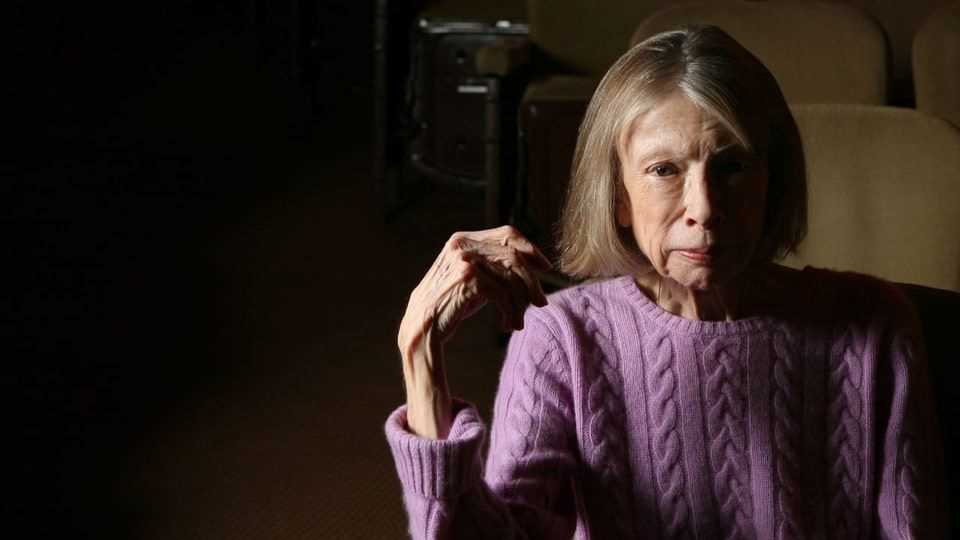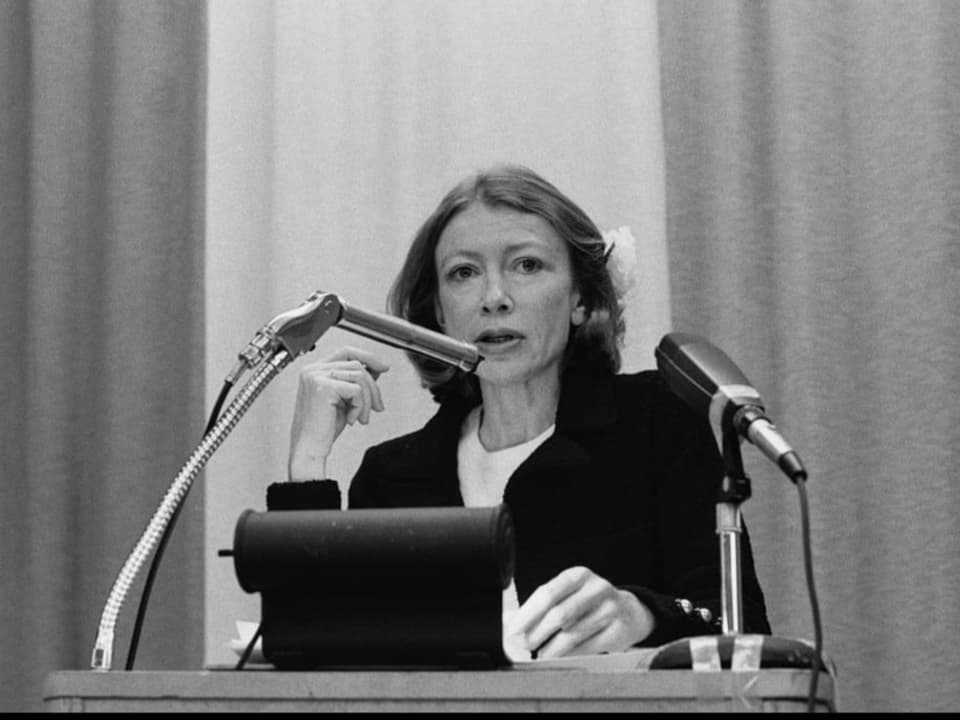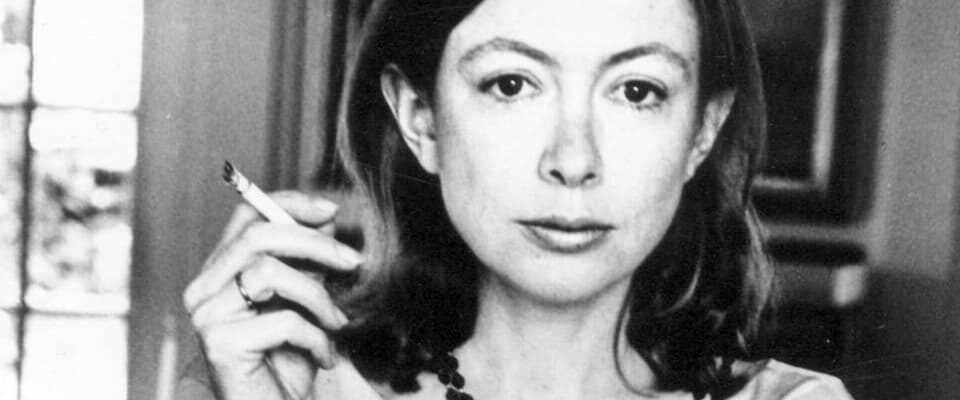contents
With her acclaimed essays on US culture and later the death of her loved one, US author Joan Didion held up a mirror to the US and the world. Now she has died at the age of 87.
She looked even more fragile than Audrey Hepburn, but that was an appearance she didn’t care much about herself. Her razor-sharp mind, inexhaustible curiosity, and incorruptible style made Joan Didion America’s foremost essayist.
She seemed a bit absent all her life, but that was deceptive. Her passionate participation was as little publicized as her friendships with Vanessa Redgrave, Harrison Ford or Martin Scorsese.
Legend:
Joan Didion with a cigarette in 1968. In the same year her first volume of essays, “Slouching Towards Bethlehem”, was about to appear in California in the 1960s.
imago images
Joan Didion was born in Sacramento, California in 1934. As for other gifted young women in the 1950s, the New York magazine Mademoiselle’s writing competition became their gateway to the world. She won it in 1955. A year later, after completing her literary studies, she also succeeded in that of the «Vogue», where she stayed for eight years.
Didion developed and perfected her game with the inside and outside. Thinking was sexy and style was character – an attitude that she still had when she was 80 when she posed for the fashion label Celine. Whereby she always kept her distance. In the Netflix documentary that her nephew Griffin Dunne made about her in 2017, she never fully revealed herself.

Legend:
Joan Didion was a gifted (and merciless) novelist and screenwriter.
Liz O. Baylen / Los Angeles Times via Getty Images
Writing without narcissism
Didion was a gifted (and merciless) novelist and screenwriter. However, she became famous for her articles and literary essays. Along with greats like Norman Mailer and Truman Capote, she is considered the most important representative of New Journalism.
The genre, with its amalgamation of the subjective and the objective, was made for her. Without any narcissism, she brought herself into play. In this way, she created resonance spaces from hard facts, in which the readers could also find themselves.
Cult book «The White Album»
Regardless of whether it was about the hippie movement, racism, political manipulation, warmongering or Hollywood sexism – Didion shredded the American dream.
She said of herself that she was not a good interviewer. Nevertheless, she was able to address sore points: “I am so small, so inconspicuous and lazy in the mouth in such a neurotic way that people soon forget that my presence could harm them.”
She created her first cult book in 1979 with “The White Album”, a collection of essays about the crisis-ridden California of the 1960s. For many, it is Didion’s best book. It combines the feeling that something is wrong in the state of America with the report of a personal psychological crisis.
Telling stories in order to live
In addition to interviews with Black Panther members, the Doors or a disciple of the mass murderer Charles Manson (actress Sharon Tate, one of his victims, was a friend of Didion), Joan Didion tells of a psychotic attack that she suffered at the time. “During this time,” she writes, she began to “fundamentally question the validity of all the stories I had ever told myself.”

Legend:
Joan Didion performing in California in 1977.
Getty Images
The book describes how life is perverted by stories. Didion shows an irreconcilable coexistence, brutal opposites, which in the outside world expose the myth of the founding fathers as a shabby lie and in the inside world bring an ego to crumble without being helped.
Grief without consolation
It’s a dynamic similar to that in The Year Of Magical Thinking, 2005, the book that made Joan Didion world famous. In it she writes about the sudden cardiac death of her husband John Gregory Dunne. He just collapsed unexpectedly.
Joan Didion describes her grieving process in the brightest tones and with analytical coldness. It’s a book without consolation – and one of the most specific readings about grief.
In 2011 she published another funeral book, “Blue Nights” (“Blue Hours”). After being in a coma for over a year, her adopted daughter, Quintana, had died.
Didion chose the title because her thoughts “began to revolve more and more around illness, the inevitability of disappearance, the end of all promises and the extinction of light.”
On December 23rd, her own light was also extinguished. Joan Didion died in New York at the age of 87.
